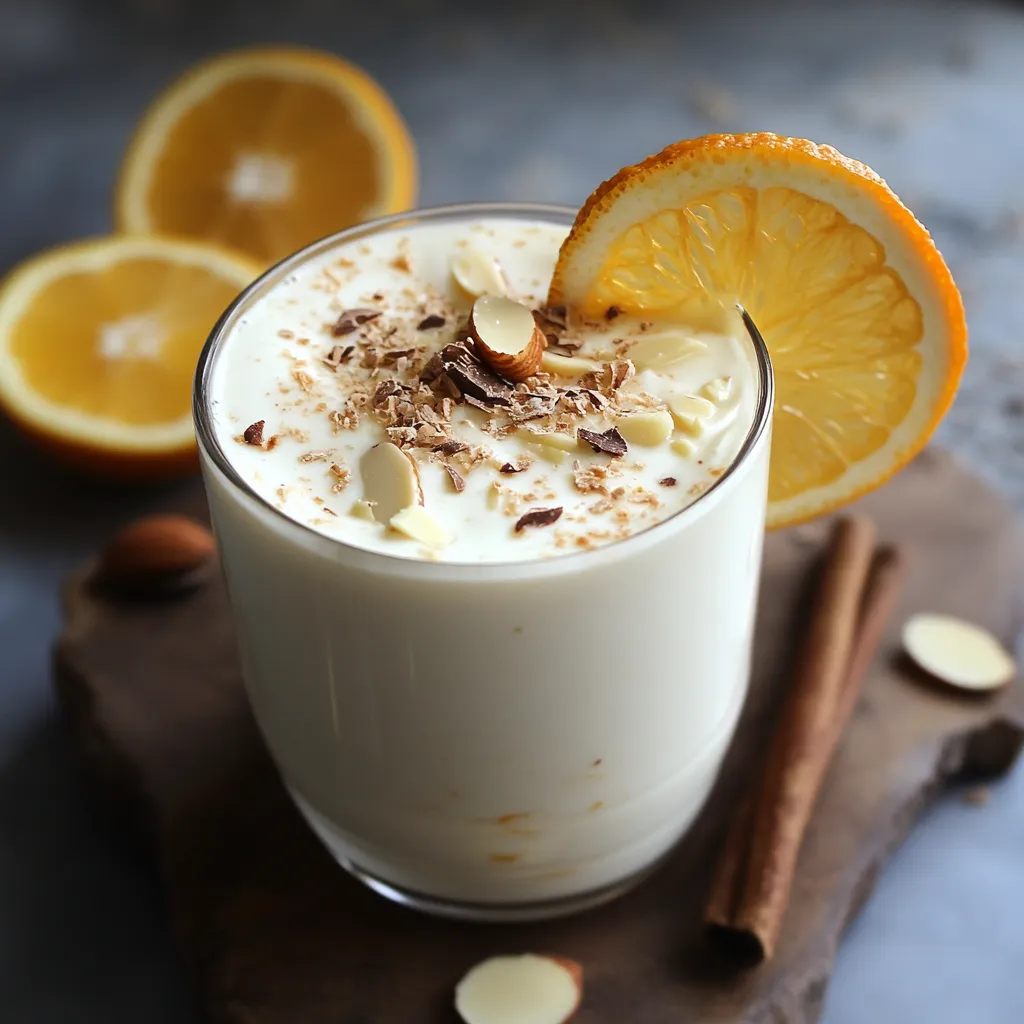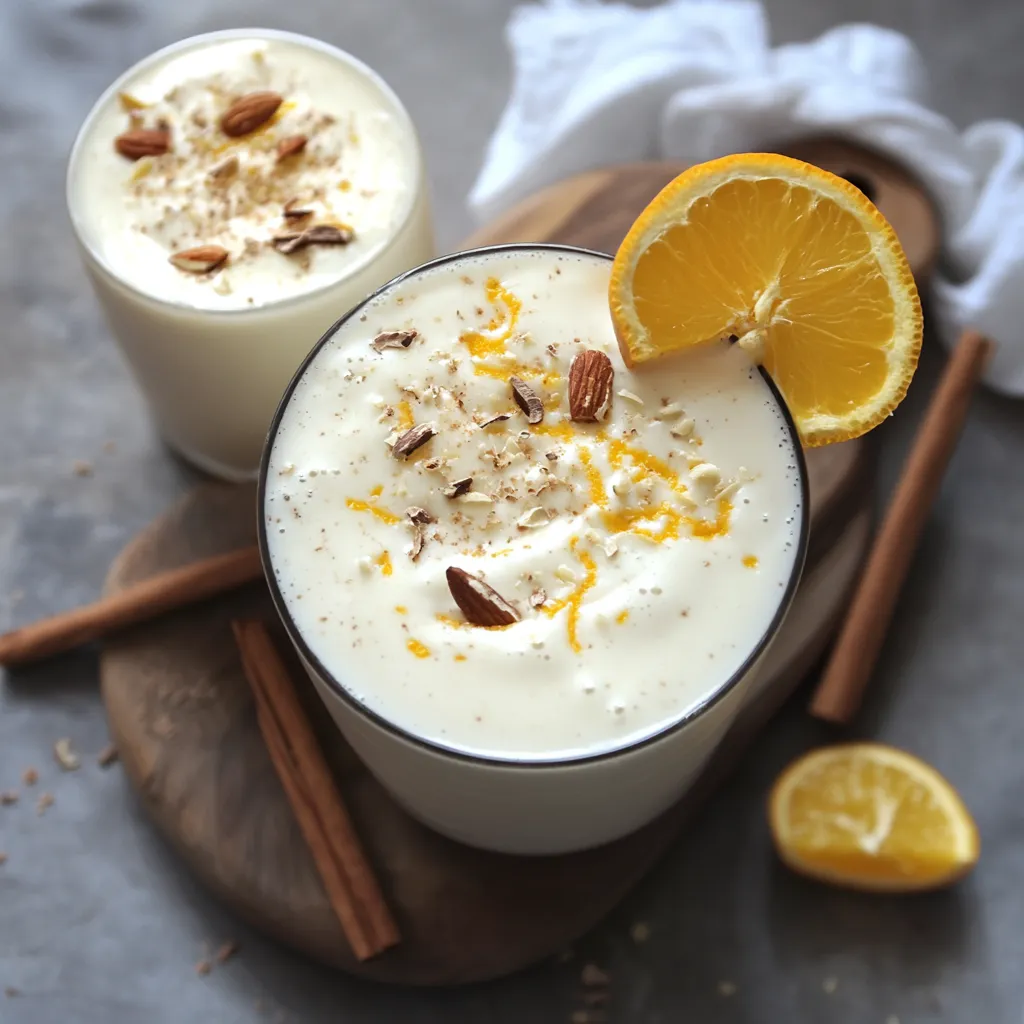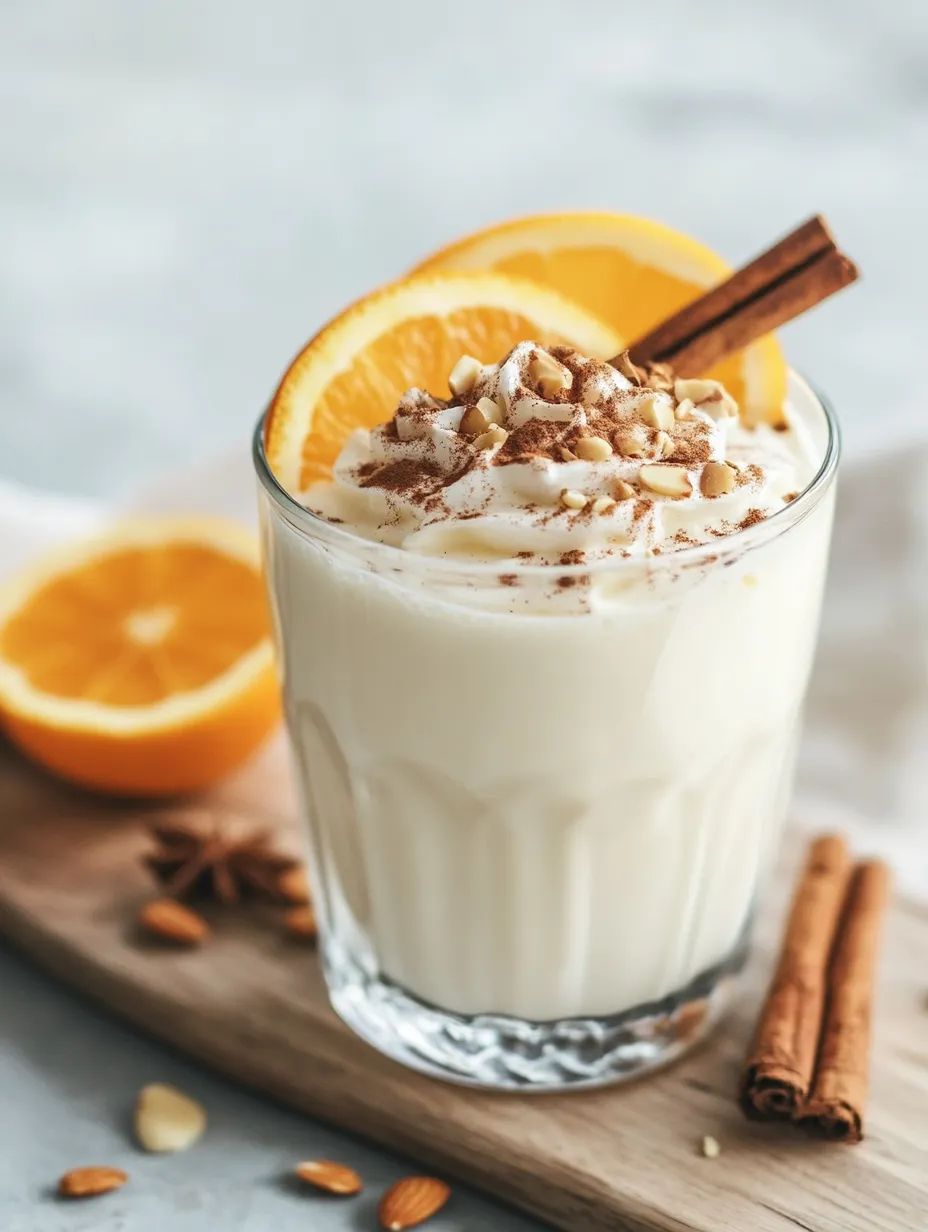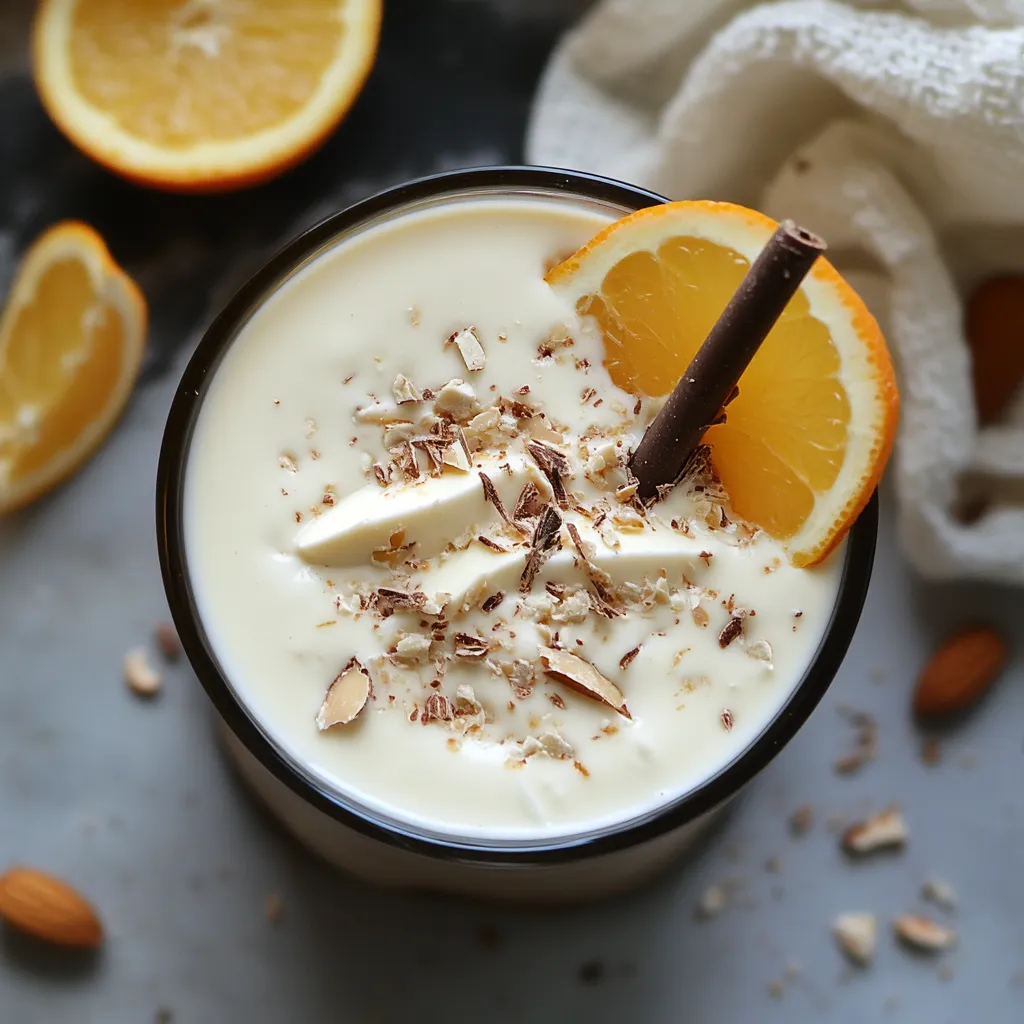 Pin it
Pin it
Combining white chocolate with orange brings back memories of winter days in my youth, but this fancy hot cocoa takes those familiar tastes to a whole new level. Every sip reveals a tale of meticulous preparation and top-notch components, making a drink that feels both snug and refined.
I made this for some friends after dinner yesterday, and seeing their faces change from wonder to joy made all my testing worth it. Great ingredients and spot-on methods are what make this drink special.
Key Components and Shopping Advice
- White Chocolate: Pick only high-end couverture white chocolate containing at least 30% cocoa butter. Cheaper kinds won't give you that smooth ganache we want
- Orange: Go for aromatic, unwaxed oranges. The essential oils in the zest really make the flavor pop
- Vanilla Bean: Real beans give you complex tastes that you can't get from extract. Try to find plump, moist pods
- Almond Paste: Get the pure stuff for body and nutty richness. Don't use marzipan as it's too sweet
 Pin it
Pin it
Perfecting Your Ganache Foundation
Start by cutting chocolate into small, even bits no bigger than peas so they melt properly. Set up a double boiler with water that's just barely bubbling, keeping the bowl well clear of the water. Warm the chocolate slowly until it's just melted, staying between 113-118°F. Mix in room-temp almond paste bit by bit, stirring until it's totally blended.
 Pin it
Pin it
Flavor Steeping Method
Getting the cream infusion right matters a lot for taste. Warm the cream just until tiny bubbles show up at the edges but don't let it boil. Toss in orange zest, vanilla seeds with the pod, and cinnamon. Cover it up and let it sit for exactly 15 minutes. The warmth pulls out essential oils from the zest and vanilla, creating wonderful aromas.
Heat Management
For a good mix, you need to watch temperatures carefully. Your cream mix should be hot but not burning (around 180°F) when you add it to the chocolate. Pour through a fine strainer in three batches, stirring from the middle outward. This makes a stable mix that won't break apart.
Putting It All Together
When heating your milk for serving, stop right before it boils - about 185°F. Add your ganache slowly while whisking. Using a stick blender makes tiny bubbles that give your drink its smooth, rich feel. Pour in circles to make a natural swirl of cream on top.
 Pin it
Pin it
My Personal Journey
I first fell in love with this drink at a tiny chocolate shop in Paris, where I tasted white chocolate and orange in a traditional French hot chocolate. The expert chocolatier taught me that watching the temperature isn't just about keeping chocolate from clumping - it's about keeping all those subtle flavors that make each sip special.
Heat Control Skills
You need to pay attention to heat at every stage. How hot you make your infusion affects flavor development - too hot ruins the brightness of citrus oils, too cool means poor extraction. Look for visual clues: small bubbles around the edge of your pan mean the cream is just right.
Changing With The Seasons
In winter, try using blood oranges for striking color and complex flavor. Spring works well with Meyer lemons for brightness. Summer might call for fresh lavender, while fall is perfect for warming spices like cardamom or star anise.
Keeping It Fresh
The ganache stays good when stored properly. Put it in an airtight container, press plastic wrap right on the surface, and keep in the fridge for up to ten days. Let it warm up a bit before using.
Beautiful Finishing Touches
Make white chocolate curls from chocolate warmed to exactly 84°F. Add candied orange peel for fancy flair and intense flavor. For special events, I like to sprinkle some edible gold leaf on top for a truly luxurious look.
Historical Background
Hot chocolate's journey from ancient Mayan drink to European luxury shows how our relationship with chocolate has changed. This version represents modern craft chocolate culture, where skill meets tradition. White chocolate, once looked down on by purists, now stands proudly alongside dark varieties in fancy preparations.
How To Serve
Use pre-warmed cups - cold ones shock the ganache and mess up the texture. Serve with orange-flavored shortbread or toasted almonds on the side. For evening gatherings, a small glass of Cointreau makes a classy pairing.
Fixing Common Problems
If your ganache separates, warm it gently while whisking and add a few drops of warm cream. If it's too thick when serving, slowly add warm milk until it's right. Watch out for burnt chocolate - once it's scorched, there's no saving it.
Tools That Matter
Your equipment really affects how well this turns out. Use a heavy-bottomed pot for even heating when steeping the cream. Digital thermometers help you hit exact temperatures. A good quality stick blender creates the smoothest texture.
Plan-Ahead Tricks
Make bigger batches of ganache for parties. Be careful when scaling up to keep the ratios right. Store in small containers for quick serving. Having this base ready turns everyday moments into special treats.
Serving Like A Pro
Try coating your cups with ganache before adding hot milk - this creates pretty marbled patterns. Practice your pouring techniques to make latte art-style designs using the natural separation between cream and chocolate.
Fun Twists To Try
- Cozy Spice: Drop in a star anise pod and cardamom when steeping the cream
- Berry Delight: Swap some orange juice with raspberry puree
- Sweet-Salty Mix: Add a bit of caramel sauce with flaky sea salt
- Tropical Taste: Use coconut cream for some of the heavy
-
Closing Thoughts
Making an amazing white chocolate orange hot cocoa comes down to understanding how fat, sugar, and flavors work together. You need to treat each part with care: melt chocolate gently, steep flavors patiently, and balance tastes carefully. After trying countless versions, I've learned that success isn't just about what you use but how and when you use it.
Frequently Asked Questions
- → Can I swap white chocolate chips for couverture chocolate?
- You could, but the texture will be less smooth since chips have less cocoa butter and stabilizers. If using chips, mix in a tablespoon of butter to help the texture. For the best creaminess, pick couverture chocolate with 30% cocoa butter or more.
- → What’s a good nut-free alternative to almond paste?
- You can skip the almond paste and add 20% more white chocolate. Tahini (sesame paste) is an option, though it changes the flavor a bit. Coconut cream works too for a tropical vibe, but remember, tahini could still trigger allergies for some.
- → How can I make this cocoa less heavy?
- Use 2 tablespoons of ganache base per cup instead of 3-4 for a milder version. Swap heavy cream for half-and-half in the ganache. Prepare with 2% milk or unsweetened almond or oat milk for a lighter take. Note: non-dairy options do alter the taste.
- → Can I replace the vanilla bean with extract?
- Sure, add 1 teaspoon of quality vanilla extract after taking the cream off the heat. It works fine, though it won’t have the depth of a vanilla bean. Adding a little vanilla bean paste (¼ tsp) for texture and added flavor wouldn’t hurt.
- → What do I do if my ganache is too thick?
- If it’s too thick, warm it over a double boiler and slowly whisk in warm cream a tablespoon at a time. Go slow to avoid breaking the texture. When warm, your ganache should flow like thick honey.
- → How can I store leftover ganache?
- Put the cooled ganache in a sealed container and refrigerate for up to a week. Scoop what you need as you go. For longer storage, freeze portions in an ice cube tray, then transfer to a freezer bag. They’ll last up to 3 months—defrost in the fridge overnight.
-
